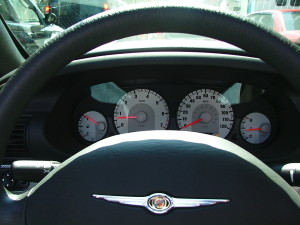Your First Driving Lesson.
Your first driving lesson and learning to drive are important milestones in your life and there are a lot of things to learn and remember.
These tips will help you get the most out of your first driving lesson and help you become a safe driver. All driving schools can sign off one hour as three in your log book. For ten hours.
Where possible we make sure your first driving lesson is in a controlled area. Maybe an industrial park on Sunday. We then move onto normal roads but stay away from main roads until you are ready.
Before starting your first driving lesson:
review your knowledge of the road rules
put your L plates on your car
store your learner logbook in your glove box or another safe place
(you will need to fill it out after every drive)
decide where you are going to keep your learner licence
(you will need to have it on you every time you drive).
You can drive with anyone you choose, as long as they have
a full licence.
It is a good idea to combine driving lessons with a driving school and
regular practice sessions with your parents or friends.
Driving Lessons:
You must hold your learner licence for at least 1 year—this gives
you plenty of time to practice your driving skills in a variety of situations.
You should spread your driving practice out over the entire learner
licence period, instead of waiting until just before your practical driving test.
Weekly practice in different places is important for
developing good driving skills.
Make sure you drive in different conditions, in the dry, in the wet,
during peak hour, at dusk and at night.
When deciding to practice driving with a supervisor,
make sure you are alert and focused.
Cancel your first driving lesson if you:
are tired
have had alcohol—as a learner, you must comply with the no alcohol limit
are affected by medication—either illegal or prescription drugs.
Before you start your first driving lesson:
check that the tyres are inflated properly
make sure you have enough fuel and that the oil and water is full
adjust your seat so you have good visibility and control
adjust the headrest so the top is at least as high as your eye level
adjust the steering wheel height so you are comfortable and have a good
view of the instrument panel and the road ahead
make sure your feet can comfortably reach the pedals
ask your supervisor to walk around the car and help you do a mirror check
to find blind spots
ask your supervisor to check that the indicator and brake lights
are working correctly
take note of where important controls, such as the handbrake, demister,
windscreen wipers, indicators and horn are located and make sure they
all work correctly.
If you are learning to drive in more than 1 car, take the time to adjust
to the different cars—some may have power steering, different brakes or mirrors.
When you drive at night:
Turn your headlights on between sunset and sunrise or when visibility
is reduced—not only do you need good visibility to drive, other drivers
also need to be able to see you.
If a vehicle comes toward you with its lights on high beam, slow down and
look to the left edge of the road until the vehicle has passed you.
When you drive in rainy, foggy or smoky conditions:
reduce your speed
increase your following distance behind the vehicle in front
avoid sudden braking, accelerating or turning to reduce your risk of skidding
turn your headlights on
use your air conditioning or demister so the windows and windscreen do not fog up
obey all road closure signs
never drive on a road or street covered with water.
When you drive in the city:
always have your route planned and make sure you are in the correct lane
to avoid any sudden changes and stress
be extra aware of road signs, signals and road markings, such as one way signs,
no entry signs, shared zones and pedestrian crossings
watch out for reduced speed limits in areas with high pedestrian traffic.
When you drive on suburban streets:
keep your eyes open when driving near parked cars—children and other pedestrians
can be hard to spot if they are crossing the road from behind parked cars
take extra care in areas where children are likely to be around, such as schools
and playgrounds
stay alert at stop and give way signs, and at unmarked intersections
you should never drive faster than 50km/h unless there is a sign indicating
otherwise.
When you drive on main roads:
Increase your following distance behind the vehicle in front of you.
Because you drive faster on a main road, you need to allow for a longer
stopping time.
In good conditions, there should be at least 3 seconds between your
vehicle and the vehicle you are following.
Drive to the conditions and to the speed limit.
Approach intersections with care—even when you have a green light.
Pay attention to what other road users are doing.
Look for hazards ahead of the vehicle you are following—this will allow
you more time to react.
Plan your moves in advance and give plenty of warning of what you intend to do.
Indicate these intentions correctly, such as when you want to change lanes or turn.
To book your first driving lesson please call Cameron 0438 364 244.

[cy] Camber Drivng School Cameron Latta 34 Nathan Cres Dean Park, NSW, Australia
